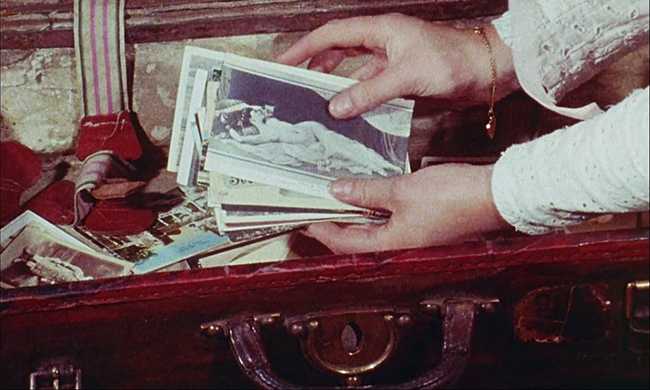The short is pretty incendiary. An 18th century maid searches for a lost lamb in the forest, only to find it dismembered by a terrifying hairy beast. The creature pursues her and begins to rape her, but the maid takes control and brings it to a climax, after which it expires from pleasure. She then buries the body and flees. The central erotic idea – that the woman begins to enjoy her rape by a hideous monster – is obviously a disturbing one.
Which is why the story added on top of the short is an important bit of framing. The dream is no longer just presented as a simple product of Borowczyk's perversities – he gives it to a character. And that character is a woman – the rape fantasy becomes hers. It inspires her to repeatedly seek satisfaction from her ugly husband-to-be, only to be rebuffed. In taking control of her desires, she also mysteriously slays her own beast (although Borowczyk has some fun suggesting that this was an act of God and a punishment for bestiality).
The power dynamic therefore is an odd one. Male sexuality is presented in a traditional way as violent and dangerous, something women must either tame or get devoured by. However the modern beast is a timid, ugly, underdeveloped man, who is too nervous even to speak to his fiancée. She is the one who takes the initiative, and it is her sexuality that ultimately proves the most dangerous. As with The Story of Sin, Borozczyk is ultimately on the women's side. And in this film he provides them with a narrow escape from the gruesome clutches of the venal, hypocritical and downright gruesome patriarchy.

